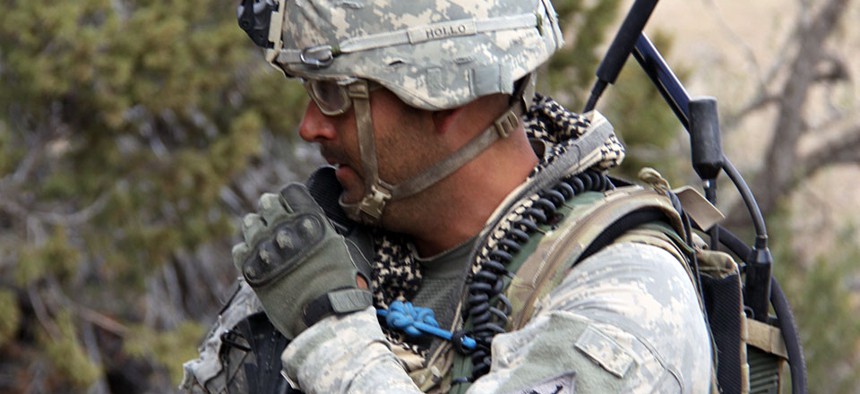Army Eyes 4G Cellular Tech for Combat Communications

A Soldier from 2nd Brigade, 1st Armored Division, uses a Joint Tactical Radio System's Handheld, Manpack and Small Form Fit. U.S. Army
Could this be the beginning of the end for JTRS?
The Army’s communications research center wants to evaluate the use of commercial, broadband cellular technology for battlefield communications, a move that could herald the beginning of the end for a similar system the Defense Department has struggled to develop and deploy since 1997.
The Army Communications-Electronics Research, Development Engineering Center — or CERDEC for short — said in a request for information last Friday to interested vendors it wants to evaluate the use of current fourth-generation, Long Term Evolution cellular technology — more commonly known as 4G LTE — “to provide soldiers at the tactical edge with extended secure wireless communications across the battlefield and enhanced Intelligence, Surveillance and Reconnaissance (ISR) capabilities.”
The Army asked interested vendors to apply their expertise to development of battlefield cellular systems that support broadband video and data as well as voice and text that could be used to develop an LTE acquisition strategy.
What Happens to JTRS?
The Pentagon and the Army worked since 1997 to develop and field the Joint Tactical Radio System — known as JTRS — which came close to a halt in 2012 when Frank Kendall, undersecretary of defense for acquisition, technology and logistics disbanded the effort after DOD spent $15 billion and fielded few radios.
The Army then took over the program and has started to buy small quantities of vehicle and handheld radios with a contract for manpack radios expected for award this month.
These JTRS radios run software owned by the government, which support data rates of one megabit per second, and the JTRS standard also includes support for wideband radios which can transmit data at the rate of 23 megabits per second.
LTE supports mobile data rates as high as 75 megabits per second.
Bernie Skoch, a retired Air Force brigadier general and defense industry consultant who’s also an amateur radio operator, said as JTRS met its programmatic demise in 2011-2012, “it makes perfect sense” for the Army to pursue the newer LTE standard “with its far more advanced application of DSP [digital signal processing] and simplified network architecture than to try to resurrect JTRS.”
Flexibility a Challenge with LTE
The real challenge the Army faces in adapting LTE for combat is making the system flexible enough to operate in a challenging radio-frequency environment, Skoch said. The Army also needs to focus on the security of any LTE system as a sophisticated adversary may be able to more readily exploit an encrypted network using a specific standard, such as LTE.
“So they’re better off, absolutely, focused on developing a fielded solution that addresses end-to-end security,” he said.
Alcatel-Lucent, Ericsson, Nokia and Motorola all manufacture LTE base stations while the standard is supported by both Apple and Android phones and tablets.
NEXT STORY: Privacy Isn't Dead -- Yet






